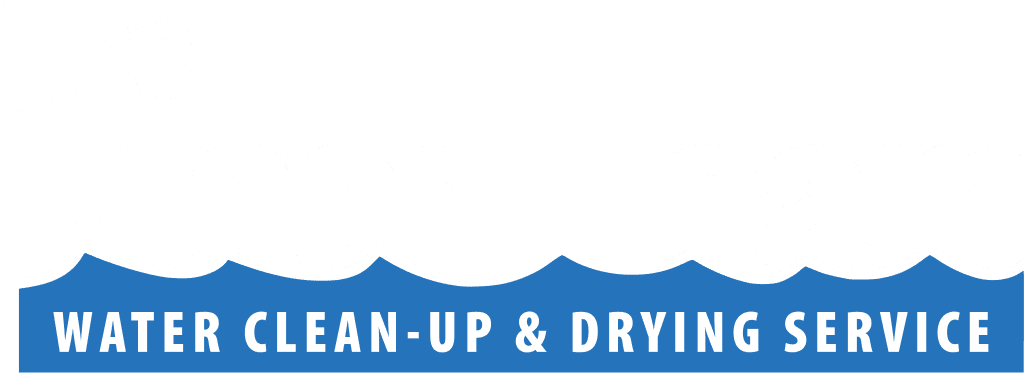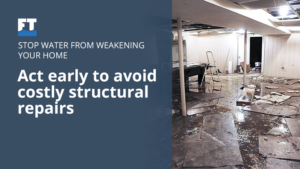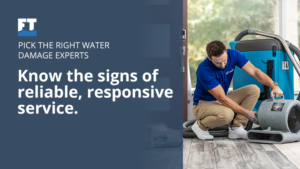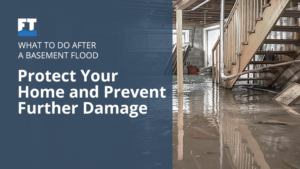Even the most conscientious homeowner deals with home repairs at some point during their stay in a home. Plumbing is one system that you can count on for at least a minor repair. And no matter how careful you are, or how often you inspect your plumbing, you may even deal with the more major repair involved with a burst water pipe.
While we can’t advise on repairing the leak, we can help you take steps to save your home from water damage.
When a water pipe bursts in your home, it doesn’t have to turn into a disaster. Here’s the list of preventative steps you can take to head off serious damage when you have water leaking (or gushing) from one of your pipes.
Turn Off the Water
When you discover a river running through your basement, common sense tells you to shut off the water, right?
Turning off the water may sound like common sense, however, you should first attempt to locate the source of the leak. If you can’t, let a plumber do the investigating. Since it may take a plumber more than a minute to get to your home, go ahead and shut off the water before it gets any worse.
Let’s go back to the common-sense comment for a moment. While it does make sense to assume you’ll know you should turn the water off, when the average person walks into a flood, the common sense switch doesn’t always activate immediately.
Instead, the average person panics and begins moving whatever they can lift to higher ground. Nothing wrong with that but shutting off the source of the flood may save more of your property.
If you’ve never thought about how you shut off the water to your home, maybe it’s time. In a two-story home, look in the basement for the main shut-off valve. In a single-story home, the shut-off is usually outside.
Hint: After you shut the water off, you may want to consider draining water left in your faucets, toilet, and water heater. This can prevent further leaking until your plumber arrives.
Warm Air Helps Dry Things Up
Immediately after the leak is discovered we’re looking at preventing further pipe damage, which, in turn, can also prevent more water damage to your home and belongings.
If the pipe burst happens during cold weather, direct warm air toward the area.
You can turn up the heat or use a hairdryer. Hone in on the burst pipe and give it some warm air. Also, open up kitchen and bathroom cabinets. This allows warm air in and helps prevent further freezing and another pipe burst.
Grab a Mop and Bucket
This is the most uncomplicated step you can take to prevent water damage after a plumbing leak.
Another common-sense tactic and one for which you won’t need any expensive tools or products. Every homeowner has a bucket (or two) and a mop.
The reason you shouldn’t wait long before sopping up the water is you don’t want to give mold a head-start. You usually have about 24-48 hours before mold starts developing after a flood in your basement or other areas of your home.
Why the fuss over a little mold? Mold can permanently damage personal belongings, furniture, finishes on woodwork, and if ignored long enough, the wood structure of your home.
Another reason for the immediate removal of standing water is you can’t properly assess water damage without first getting rid of the water.
Be Proactive
We’re all about prevention and what better way to prevent water damage than using caution when you store personal belongings?
Most people use at least a portion of their basement for storage. Holiday decorations, seasonal clothing, sports equipment — you name it, you can probably find it in a basement.
Of course, people also use the lower level of a home for living space. They have furnishings and electronics in the living area. Homeowners also often carpet a basement, which presents another risk for water damage.
Use caution when you store boxes, and use shelving so that you can keep boxes off the floor and a safe distance from potential flooding. Place electronics on a stand, buy furniture that sits up off the floor, and consider tile or laminate flooring instead of wall-to-wall carpet.
Removal of Wet Belongings
Even though you mop up or extract water from a burst pipe, you should still remove any wet belongings from the area.
Whether it’s clothing or carpet, don’t leave wet items inside your home. Remember how little time it takes for mold to develop?
Removing anything wet lets you determine whether it’s salvageable. The sooner you do that, the sooner you can start the drying and cleaning process.
Unless you have area rugs, you can’t just remove the wet carpet. But you can use a shop vac and start extracting water from the carpet. If you have wet furniture, dry it off and get it out of the area, if possible. Water can permanently damage wood furniture, so if you can remove it and get it dry quickly, you can usually salvage it.
Let the Professionals Help
As helpful as you are, you likely don’t have specialized equipment or tools that make damage prevention possible.
A professional restoration team brings in an array of equipment, including commercial dryers, vacuums, and of course, their expertise. They understand the restorative drying process. While it may take you several hours to suck up all the water, it may only take them a few.
A water damage restoration company knows how critical time is when it comes to saving your home and your belongings. They also know how to work with insurance companies and can help you submit a claim if needed.
Need Help with the Aftermath of a Burst Water Pipe?
We’re always concerned with water damage prevention. It’s part of our mission. Hopefully, our tips help you minimize the impact of potential water damage from a burst water pipe.
If you’re in the clean-up process, we can help! Contact us today and let our team work with you to prevent further water damage.







